|
|
Dear Colleagues,
While the world seems to become more and more divided on an almost daily basis, science will continue to lead by example and do exactly the opposite. The League of Advanced European Neutron Sources, LENS, and the League of European Accelerator-based Photon Sources, LEAPS, are two important and separate initiatives that have recently been created with the aims of enhancing collaboration between such facilities and exploiting these sources as primary drivers for science and innovation in Europe.
|

Christian Rüegg
|
|
The Paul Scherrer Institute is a founding member of both leagues and its scientists play prominent roles in the full breadth of their activities, meaning in science, instrumentation, technology and policy. PSI will host major LENS events, starting with the meeting of the working group on technology development and operation, which takes place today and tomorrow (October 1-2). We will also host the 2nd LEAPS plenary meeting on November 18-20. You are invited to contribute to both LENS and LEAPS, and to these two upcoming events, either individually or through your home facilities or various user organisations.
It may soon become difficult once again for Switzerland to participate in European research and innovation programs under Horizon Europe, as it also may for the UK. Both countries contribute leading sources not only of neutrons and photons but also of muons. LENS and LEAPS could provide ideal platforms to help define future access and joint investments, as well as fostering the science and technology collaborations that are key to our success!
Christian Rüegg
on behalf of the Neutrons and Muons Research Division, Paul Scherrer Institute
|
|
Next proposal submission deadlines:
SLS: PX beamlines
deadline: October 15, 2019
more information
SµS
deadline: December 9, 2019
more information
Particle Physics
deadline: January 13, 2020
more information
SINQ (upgrade program 2019-20)
deadline: January 31, 2020 (tbc)
more information
SLS: non-PX-beamlines
deadline: March 15, 2020
more information
SwissFEL
deadline: March 15, 2020
more information
An overview of all proposal submission deadlines of the PSI facilities can be obtained here.
|
|
|
Operando x-ray characterization of high surface area iridium oxides
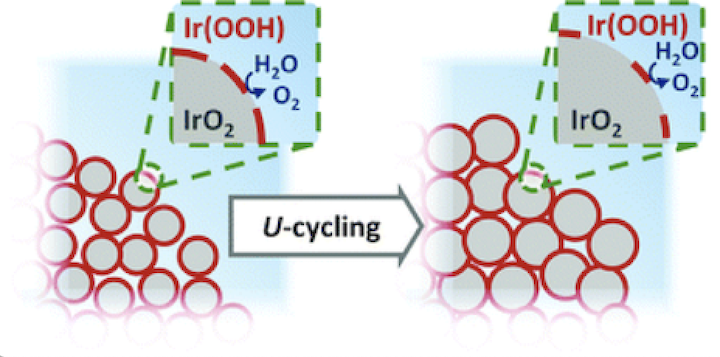 SLS - Catalytic insight SLS - Catalytic insight
In combined anomalous small angle X-ray scattering (A-SAXS) and X-ray absorption spectroscopy (XAS) measurements at the Swiss Light Source, PSI researchers working with colleagues from ETH Zurich have gained new mechanistic insight into the activity of a catalyst that is central for converting water into H2 and O2 - a promising route to producing clean energy. Iridium oxide is the state-of-the-art catalyst for the so-called oxygen evolution reaction (OER). The availability of the material in the Earth’s crust is extremely limited, and therefore high-surface-area iridium oxides are particularly sought after. These, however, tend to have poor operative stability. Why this is, has not been clear. The study of two high-surface-area iridium oxides under operando conditions now clarifies the mechanism behind the activity loss, by decoupling the relative contributions of different instability mechanisms to the overall deactivation.
Read the full story
|
|
|
M. Povia et al, Energy and Environmental Science, adv online publication (2019)
|
|
|
PSI imaging helps with rocket launches
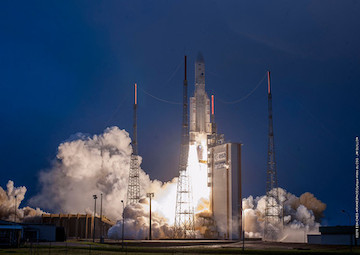
SINQ - Neutrons for a precise start
Rockets of the European Space Agency ESA fly into space with support from the Paul Scherrer Institute PSI. Imaging carried out at PSI in cooperation with Dassault Aviation ensures the quality of certain components of the Ariane 5 and Vega launch vehicles. With the help of the neutrons generated at the neutron source SINQ, PSI researchers are screening so-called pyrotechnic components that are installed in the ESA rockets. These components, which act like fuse cords and igniters, ensure, among other things, that the booster rockets are dropped at the right hundredth of a second. The Ariane launch on 20 June took place with components that had been examined at PSI.
Read the full story
|
|
Critical fields of Nb3Sn prepared for superconducting cavities
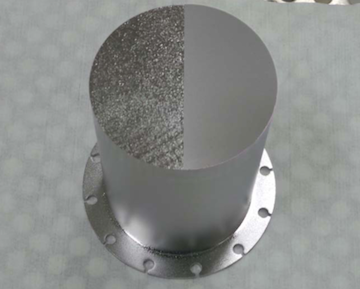
SμS - Critical field boost
Direct measurements of the London penetration depth λ of Nb3Sn, performed at PSI using the low-energy muon spin rotation (LE-μSR) technique, provide important insight into the properties of a material that might find use in future superconducting radio-frequency cavity resonators. These resonators are key components in future particle accelerators and are used in modern synchrotron sources and free-electron lasers. They are typically produced from pure niobium, but that approach is reaching fundamental and practical limits. Nb3Sn is emerging as a promising alternative, however, in cavity tests surprising behaviour has been found: the critical fields were unexpectedly large relative to the lower critical field derived from λ values determined indirectly. The direct measurements using LE-μSR, combined with further experiments performed at the Helmholtz-Zentrum and TRIUMF, now provide a fuller picture, and confirm that Nb3Sn cavities can indeed be operated in a metastable state above the lower critical field.
Read the full story
|
|
|
S. Keckert et al, Superconductor Science and Technology 32, 075004 (2019) - featured article
|
|
|
First x-ray transient grating spectroscopy experiment
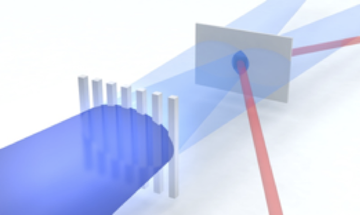 SwissFEL - A new field comes to life SwissFEL - A new field comes to life
At SwissFEL, the very first transient grating spectroscopy experiment in the x-ray regime has been performed. This powerful nonlinear-optics technique is based on interfering two pulses to create a standing-wave excitation on a sample, which in turn modulates the index of refraction. The excitation dynamics is subsequently probed with a third pulse that diffracts from the transient grating. The technique has been used successfully with optical and XUV pulses, but extension to x-rays proved extremely challenging. By exploiting the Talbot effect for convergent FEL beams, a SwissFEL team collaborating with colleagues from EPFL, FERMI and MIT has now achieved x-ray transient gratings, which they probe with laser light. The experiments demonstrate bulk sensitivity and access to electronic resonances — paving the way for nonlinear optics experiments in the x-ray regime. |
|
New CMS analysis of the decay of B mesons into two oppositely charged muons
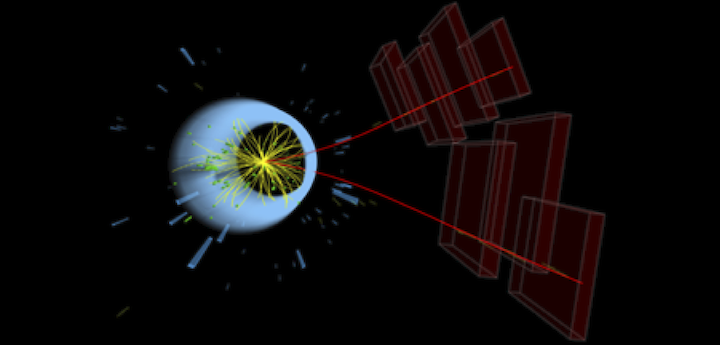 Particle Physics - Zooming in on extremely rare decays Particle Physics - Zooming in on extremely rare decays
A new analysis by the CMS collaboration at CERN, performed predominantly at PSI and drawing largely on the powers of the LHC grid computing Tier-3 located at PSI, yields improved branching-fraction and effective-lifetime measurements of B mesons decaying into two oppositely charged muons. These extremely rare decays are predicted to be especially sensitive to physics beyond the standard model. Following groundbreaking first results based on LHC Run-1 data, published by the CMS and LHCb collaborations, CMS has now updated its analysis, adding 2016 Run-2 data. In doing so, for the first time the dimuon effective lifetime of the Bs meson was measured in CMS. The results obtained are fully consistent with standard-model predictions.
Read the full story on the CMS-collaboration page
|
|
CALIPSOplus - I3 Access Program for SMEs
SLS
CALIPSOplus, a European Horizon2020 funded research and innovation program, provides access support for SMEs to light sources. The access is based on a specific review system for SMEs in parallel to the established academic access route but following the same principles. The proposal confidentiality is kept during the whole process. If the proposal is accepted, the SME will have access to the requested light sources and the experiments will be financially supported through CALIPSOplus, more information.
For industry use, SLS and SwissFEL offer direct access through the proprietary route, as well. Read more
|
|
SINQ guide upgrade is progressing well
SINQ
The SINQ guide upgrade is rapidly progressing. After the 4.5m guide section closest to the cold source was successfully installed in the spring this year, work is now focused in the bunker area where the shielding walls were built and finished in July. Some of the shielding was developed in-house in cooperation with an external company and will lead to an overall reduction of the fast neutron background in the guide hall. Several guides are now being installed in the bunker and will be completed by early October. The closing of the bunker is planned for February, and the restart of SINQ in May 2020, which means we will have two proper beam cycles in 2020 with about 10 instruments.
|
|
Transversal polarization now possible on µE1
SμS
Traditionally, transverse field µSR measurements on a high momentum decay muon beam like µE1 are complicated by the fact that the field has to be applied perpendicular to the momentum which leads to a deflection of the beam due to the Lorentz force. Accordingly, sample and detector positions always have to be adjusted with respect to the applied magnetic field. Following an approach from TRIUMF, we were recently able to obtain a 64% polarization of the muon beam by careful adjustment of the pion beam and an asymmetric excitation of quadrupole magnets in the µE1 beamline. This opens the possibility to perform transverse field µSR experiments on this high momentum beam by applying the magnetic field along the beam direction without the necessity to adjust sample or detector positions.
|
|
Upgraded control system for UCN
Particle Physics
The ultracold neutron (UCN) source has been in operation for the last 8 years delivering UCN on a routine basis to experiments at three beam ports. The flagship experiment is the search for a permanent electric dipole moment of the neutron (nEDM), where a new result is expected soon. Following the upgrade of the control system at SINQ and in order to be compatible with PSI’s IT compliance standards, all server hardware had to be upgraded. In parallel, the entire Siemens PCS7 control software of the UCN source was upgraded from Version 7.1 to 9.0. All control sequences, most critical the ones for cool-down and cryo-operations, and user interfaces were migrated and successfully tested. This allowed the start of operation in time early June. Both control systems of SINQ and UCN are now operating with the same standard. The UCN source has been operating again reliably since beginning of July, serving experiments in area West, while in area South the new 'n2EDM' experiment is being installed.
|
|
PSI Pocket: new information platform for our users
PSI User Office
PSI has launched a new information platform called " PSI pocket". It has been developed for the users of our large scale facilities, for guest scientists and proton therapy patients: "PSI Pocket"' summarizes important practical information not only like accelerator status and scientific highlights but also PSI phone book, orientation on the campus, the actual OASE menu and public transport from and to PSI. PSI Pocket is optimised for the use on mobile phones. Just give it a try and open the Pocket link in your web browser. |
|
JUSAP - The Joint Users Association
Dear colleagues
In order to improve the availability of food at PSI on weekends and public holidays the external "Food Trucks" have made the transition from the pilot phase to the operational phase in 2019, thus providing a variety of tasty dishes on the days when the canteens are closed.
|
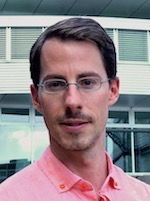
Claude Monney
|
|
During the last JUSAP meeting Fabian Spindler-Dei from the PSI restaurant OASE joined to discuss further improvements of the canteen services and promised to consider more vegan and vegetarian options as requested by many users.
The upgrade of the SINQ neutron guides is well on track. The installation of the first three guides already started by mid-August and is expected to be finished by the end of September or early October. Closure of the neutron guide bunker is expected for mid-February 2020. After that, SINQ operation will be independent from the progress in the guide hall. Therefore presently we expect the restart of SINQ operation in May 2020 after the end of the regular HIPA spring shutdown. The next call for proposals will be announced in due time - a submission deadline at the end of January 2020 is presently envisaged.
The 1st regional workshop of the European Synchrotron and FEL User Organisation (ESUO) took place on August 28th, 2019 in Belgrade in Serbia, as a satellite event of the Photonica2019 conference. Two sessions were organized: a session open to the conference participants and held at the Serbian Academy of Sciences and Arts of Belgrade, and an open session held at the Faculty of Physics of the University of Belgrade. Both events were organized by ESUO, in collaboration with CALIPSOplus and ESUO-Serbia. Thanks to the conference organizers for having hosted us, as well as to Dr. Bratislav Marinkovic, the speakers and the participants for having contributed to the success of the workshop. You can contact and follow ESUO per email, Linkedin and Twitter.
We encourage you, members of the PSI user community, to communicate to us any issues, concerns or suggestions. In this case, please contact us, committee members, directly.
Yours sincerely,
Claude Monney, Dirk Wiedner, Stefan Janssen, and Annick Froideval on behalf of the JUSAP committee
|
|
Upcoming events
Please have a look at our conference calendar.
|
|
|
|